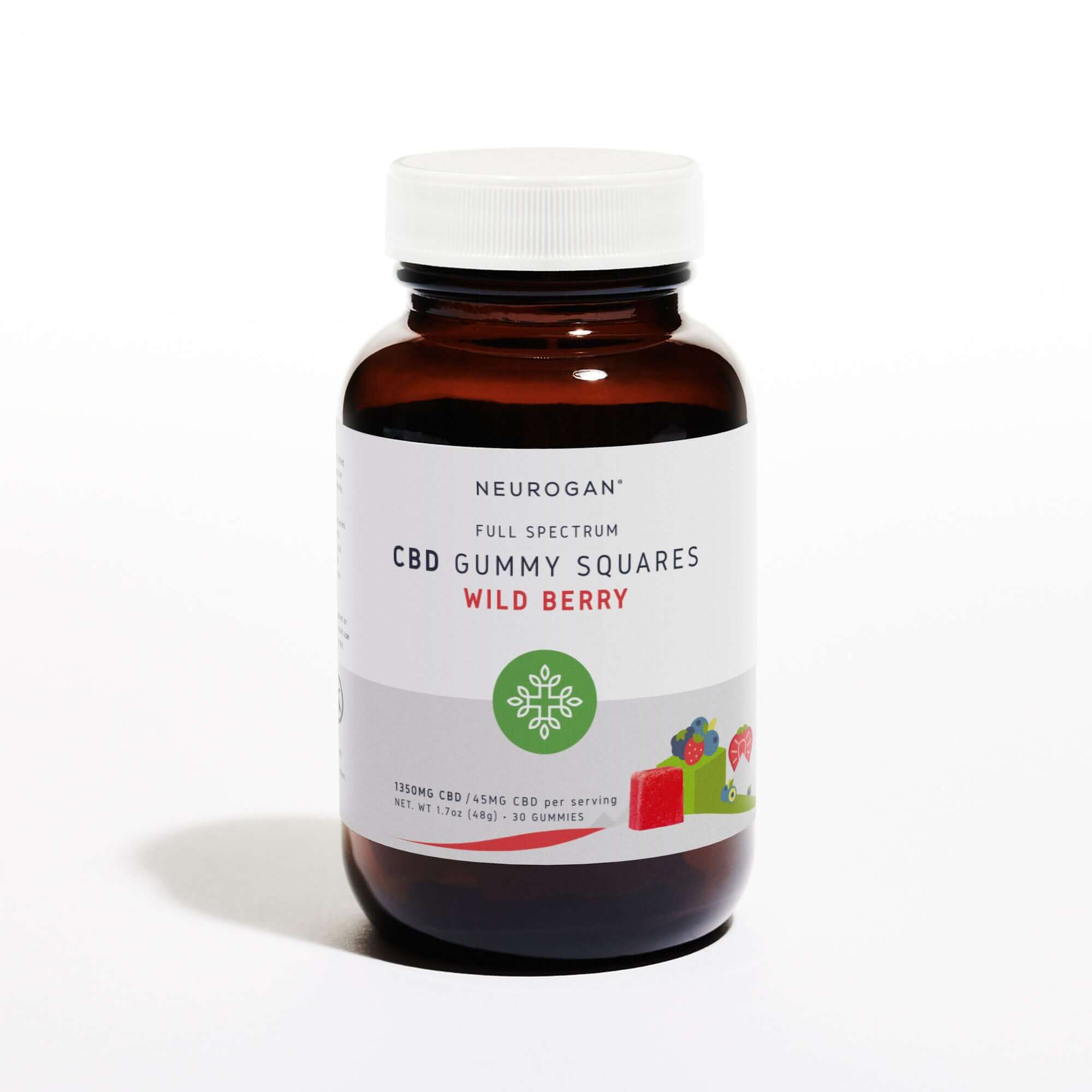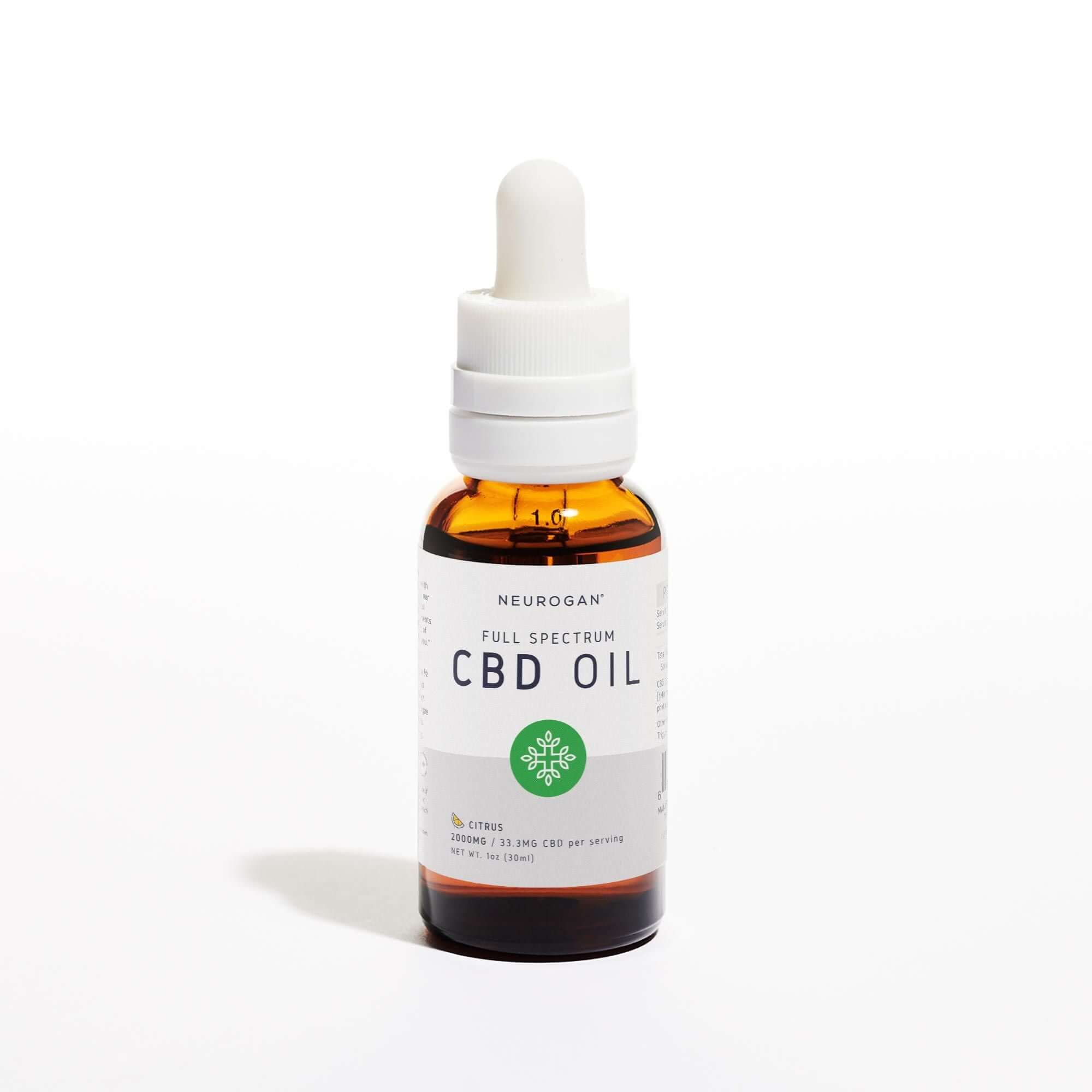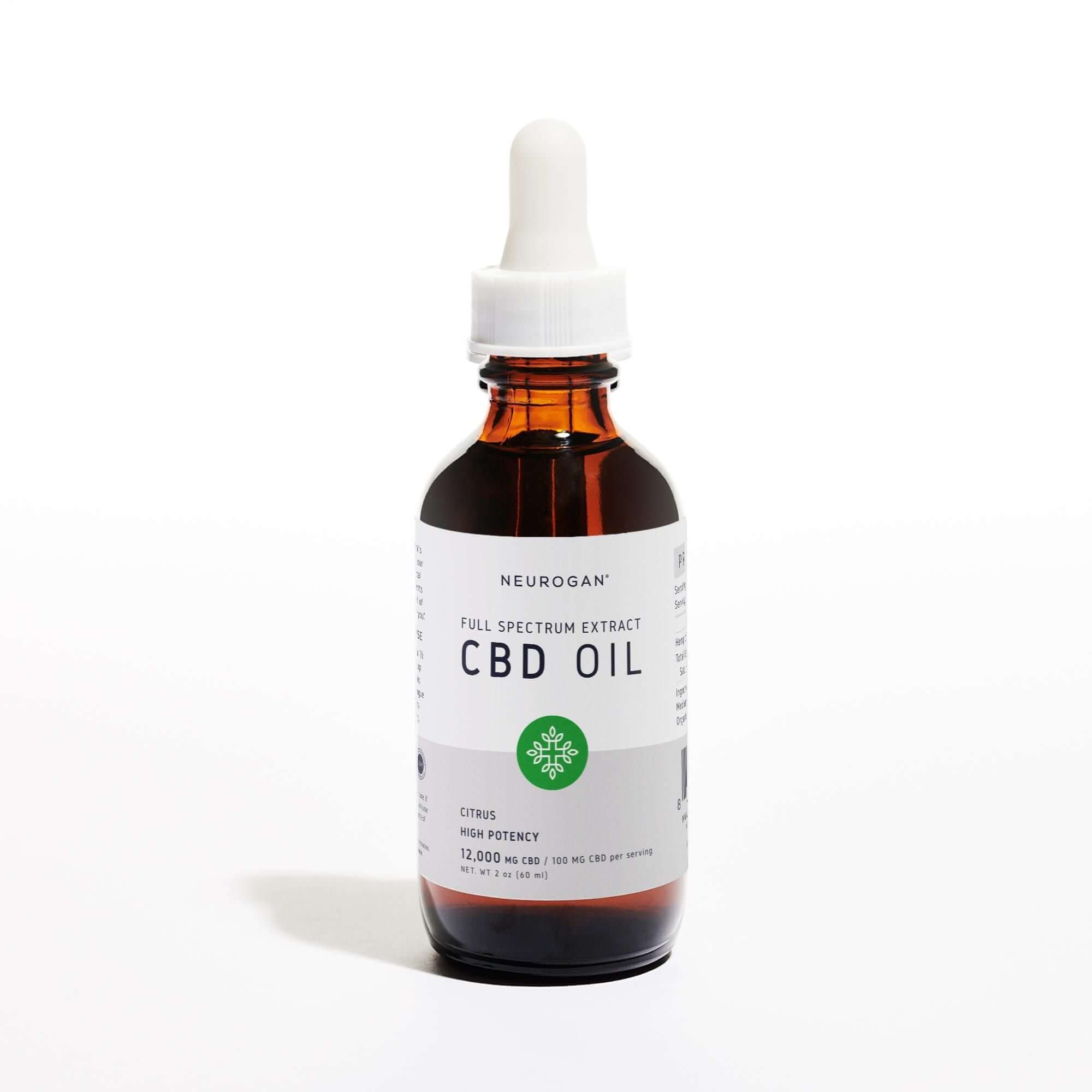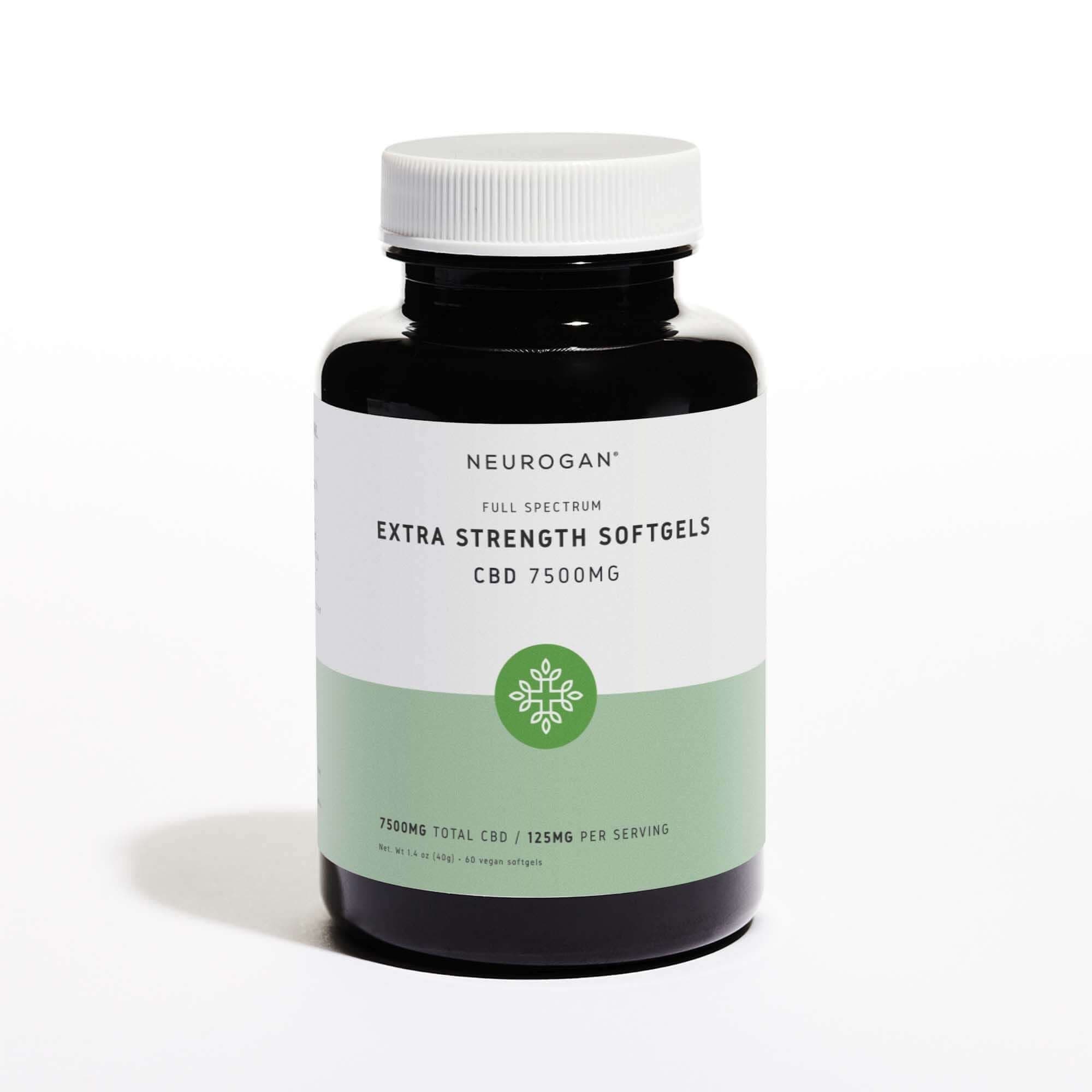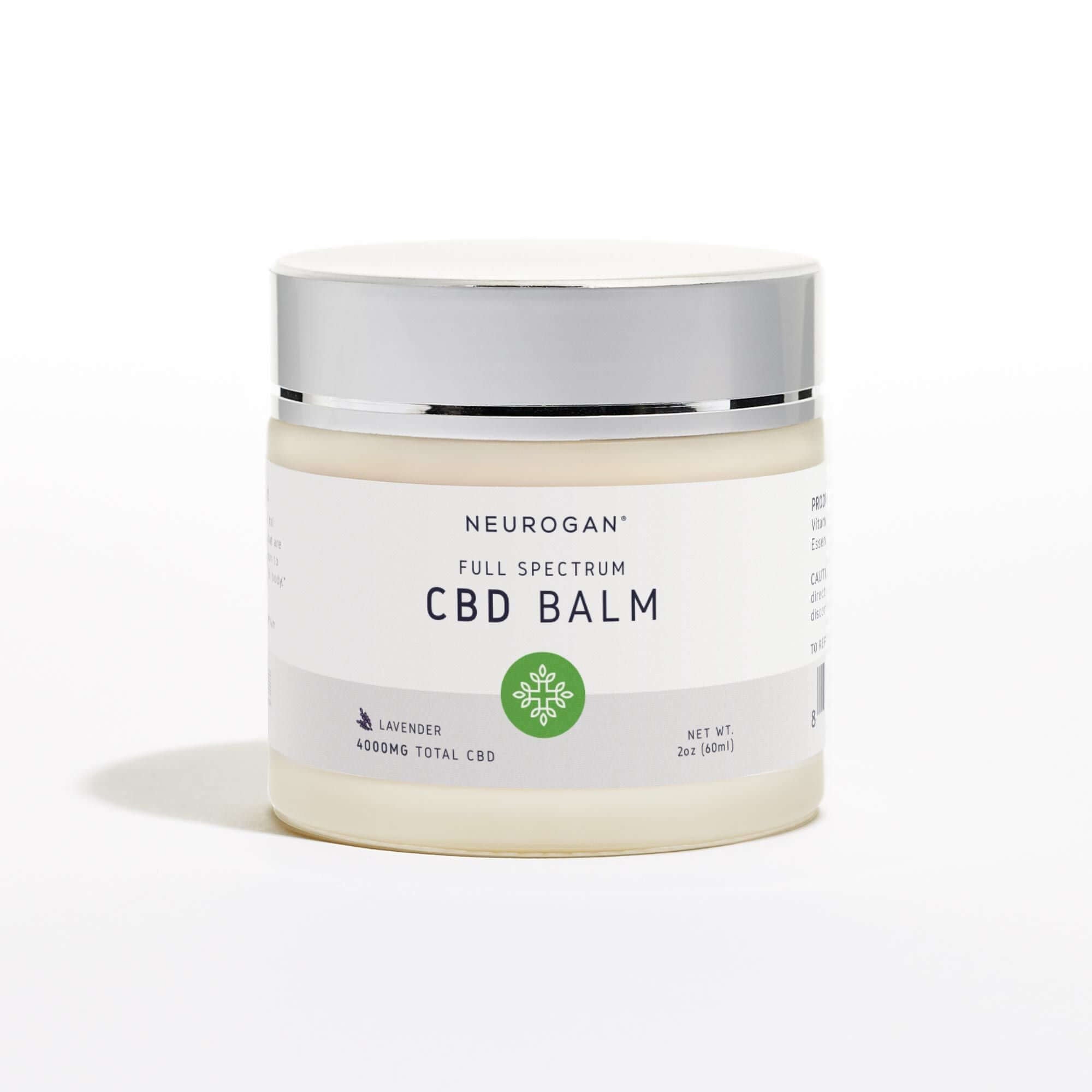As a cannabis-derived compound, a common question is whether or not CBG can get you high.
CBG will not get you high, however, scientific research shows that CBG can lighten the side effects you experience from THC, which then allows you to get the benefits without the psychoactive effects.
On top of that, CBG also works well with CBD, especially for brain health, which is why many people are using it as a productivity tool for sharpening focus and attention.
In this article, we'll discuss why CBG doesn't induce a similar high to THC use in marijuana and briefly discuss what research shows about its potential for supporting brain health.
What Is CBG?
Cannabigerol (CBG) is the subject of a growing body of cannabis-related research. While you might be familiar with CBD and THC, the main cannabinoids from cannabis plants, CBG is a newcomer to the cannabis market—but it's by no means a “new” compound. In fact, CBG is the precursor molecule to THC and CBD.
Technically, the real mother cannabinoid is the acidic form of CBG, cannabigerolic acid (CBGA).
The shape of the cannabinoid molecule plays an important role in how THC, CBD, and CBG influence the body.
Does CBG Get you High or Stoned?
No, CBG does not get you high. Unlike THC, the primary psychoactive compound found in marijuana that is known for its intoxicating effects, CBG (cannabigerol) typically does not produce such effects.
Cannabinoids can affect everyone differently, but most people don't experience an intoxicating effect using CBG like they would from THC in marijuana.
There are many similarities between CBD and CBG in terms of supporting a healthy lifestyle, but one of the more notable effects of CBG oil is its ability to combat some of the adverse effects of THC and its potential for brain health.
As long as your CBG product is derived from Farm Bill compliance cannabis plants, it should be federally legal and technically non-intoxicating. Always look to the company's Certificate of Analysis on the extract used to ensure it's safe and contains the listed potency and cannabinoid profile.
Homeostasis and the Cannabinoids in Action
The Brain-Body Connection
The endocannabinoid system (ECS) is observed in every group of animals on earth—excluding insects [1]. This is the portion of the nervous system that manages homeostasis.
Homeostasis is the automation of staying the same. It allows animals to maintain an optimal body state by responding to external stimuli—like changing temperature, stress, fear, etc. The ability to self-regulate is a useful adaptation, which is why it is so common in the animal kingdom.
These receptors bind to chemicals, and the strength of that bond produces some action (or prevents one from occurring). These actions could be sending a signal, opening or closing a channel, or releasing another chemical, among others.
Does THC or CBG get you more High?
The endocannabinoid system was discovered due to research on the psychoactive effects of THC. The illegal status of marijuana slowed down a lot of progress in investigating its effects, so much of the findings are relatively recent (in the early 1990s) [2]. Until now, we didn’t know how cannabinoids worked in the human brain.
THC was shown to activate two receptors, creatively called CB1 and CB2, for Cannabinoid Receptors 1 and 2.
The strong activation of CB1, in particular, is what makes THC psychoactive. When stimulated, the CB1 can change mood, balance, and perception. Cannabinoids primarily interact with the CB1 and CB2, but they are sometimes observed to have unique effects at other receptor sites.
CBG is considered non-psychoactive, because it doesn't activate the CB1 receptors as drastically as THC, but it goes the extra mile. One of the other effects of CBG is that it may make THC less active [3].
When CBG binds with CB1, it's not powerful enough to cause an intoxicating effect, but gets in the way of THC from binding to the receptor. You could say that CBG limits the psychotropic effects of THC by running interference.
In marijuana and full spectrum cannabis plant products, the presence of CBG is thought to mellow the overall experience [2]. This is called the "entourage effect." It's believed that when taken together, cannabinoids are more effective, provide a better experience, and have fewer unwanted side effects.

How to Consume CBG
CBG is popping up in oils, capsules, gummies, and topicals. You can consume CBG as you would enjoy your favorite CBD products.
Most people find the best effects from their CBG products as full spectrum extracts.
Full spectrum contains a wide range of cannabinoids and terpenes—not just CBG—to create a stronger and more balanced effect profile, thanks to the entourage effect.
You can also products only containing CBG as the active ingredient, which is made by isolating the compound from a full spectrum extract. You may find that you need a higher dose of CBG isolate products to achieve the same desired effects.
What Do The Side-Effects Of CBG Feel Like?
The side effects of CBG are similar to that of CBD—very mild and temporary.
Natural cannabinoids are observed to be well-tolerated, but if you take too much CBG it can produce some unwanted side effects. People have reported feeling nauseous, upset stomachs, drowsiness when they've taken too much CBG.
This is why it's important to start with small amounts of CBG to understand your tolerance.
Where Can I Buy CBG Oil?
CBG is legal to purchase and consume as long as it comes from Farm Bill compliant hemp plants, containing THC concentrations of 0.3% or less.
Since CBG is a minor cannabinoid, most abundant in hemp plants, it's difficult to source. Many companies are breeding CBG dominant hemp strains and harvesting them early to extract concentrated quantities of CBG for CBG oil and other products.
Since so much research is popping up about the benefits of CBG, many CBD brands are jumping on the wave and producing their own line of CBG products made from either CBG-rich hemp strains or CBG isolate.
The best place to shop for CBG products, including the best CBG gummies, is online. Here, you can comfortably browse from home, enjoy a wide variety of options, and most importantly, access third-party lab tests to ensure the safety and quality of your chosen product.
FAQ
What Is CBG?
A significant amount of cannabis-related research is focusing on cannabigerol (CBG). While CBD and THC are the most well-known cannabinoids derived from cannabis plants, CBG is a relative newcomer to the cannabis market, yet it is far from a “new” chemical. CBG is, in fact, the precursor molecule to THC and CBD. The true mother cannabinoid is cannabigerolic acid, an acidic version of CBG (CBGA).
Can CBG Get You High?
As a cannabis-derived chemical, one frequently asked question is if CBG may make you high. Most people do not feel the intoxication effects of CBG as they would with THC. However, scientific research indicates that CBG has a lot of promise for brain health, which is why many individuals use it as a productivity aid for sharpening focus and attention.
How to Use CBG?
CBG is becoming more widely available in oils, pills, gummies, and topicals. CBG can be consumed in the same way as CBD products are. Most people find that full spectrum extracts, which contain a wide range of cannabinoids and terpenes in addition to CBG, produce a stronger and more balanced impact profile, thanks to the entourage effect.
What Are The Potential Side Effects Of CBG?
CBG has similar side effects as CBD in that they are mild and temporary. Natural cannabinoids have been found to be well-tolerated, however taking too much can result in unpleasant side effects. People who have taken too much CBG have reported feeling queasy, having upset stomachs, headaches, and tiredness. This is why it is critical to begin with tiny dosages of CBG to determine your tolerance. Always patch test on your skin before using a CBG topical to ensure you don't have any reactions to the product's components.
References
- Silver R. J. (2019). The Endocannabinoid System of Animals. Animals: an open access journal from MDPI, 9(9), 686.
- Russo E. B. (2011). Taming THC: potential cannabis synergy and phytocannabinoid-terpenoid entourage effects. British journal of pharmacology, 163(7), 1344–1364.
- Navarro, G., Varani, K., Reyes-Resina, I., Sánchez de Medina, V., Rivas-Santisteban, R., Sanchez-Carnerero Callado, C., ... & Franco, R. (2018). Cannabigerol action at cannabinoid CB1 and CB2 receptors and at CB1–CB2 heteroreceptor complexes. Frontiers in pharmacology, 9, 632.
- Cascio, M. G., Gauson, L. A., Stevenson, L. A., Ross, R. A., & Pertwee, R. G. (2010). Evidence that the plant cannabinoid cannabigerol is a highly potent alpha2-adrenoceptor agonist and moderately potent 5HT1A receptor antagonist. British journal of pharmacology, 159(1), 129–141.
- Bantick, R. A., Rabiner, E. A., Hirani, E., de Vries, M. H., Hume, S. P., & Grasby, P. M. (2004). Occupancy of agonist drugs at the 5-HT1A receptor. Neuropsychopharmacology : official publication of the American College of Neuropsychopharmacology, 29(5), 847–859.
- Giovannitti, J. A., Jr, Thoms, S. M., & Crawford, J. J. (2015). Alpha-2 adrenergic receptor agonists: a review of current clinical applications. Anesthesia progress, 62(1), 31–39.
- Hill, A. J., Williams, C. M., Whalley, B. J., & Stephens, G. J. (2012). Phytocannabinoids as novel therapeutic agents in CNS disorders. Pharmacology & therapeutics, 133(1), 79–97.
- Nachnani, R., Raup-Konsavage, W. M., & Vrana, K. E. (2021). The Pharmacological Case for Cannabigerol. The Journal of pharmacology and experimental therapeutics, 376(2), 204–212.
- Alger B. E. (2013). Getting high on the endocannabinoid system. Cerebrum : the Dana forum on brain science, 2013, 14.
- Brierley, D. I., Samuels, J., Duncan, M., Whalley, B. J., & Williams, C. M. (2016). Cannabigerol is a novel, well-tolerated appetite stimulant in pre-satiated rats. Psychopharmacology, 233(19-20), 3603–3613.









